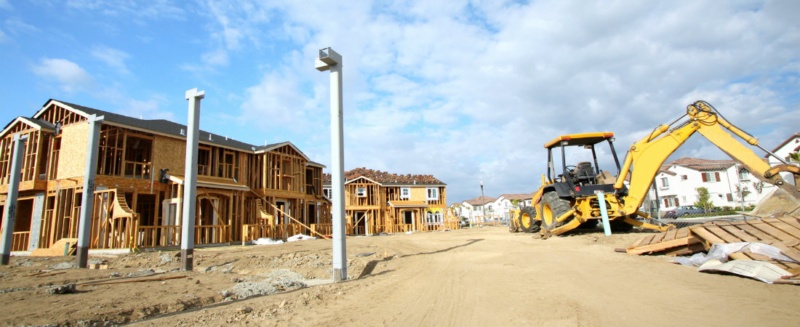Q: Anyway, my wife and I are thinking of tearing down our house. We love the neighborhood.
Our street is experiencing a lot of tear downs. Our house is a 1946 ranch that would probably fetch north of $500,000 if we sold it outright. We paid $249,000 10 years ago, owe $170,000 and have been paying down a 15-year mortgage at 4.75 percent for the past four years. We also make an extra payment each year. We also have a small second mortgage that we used to pay off my law school loans.
The houses being town down are much smaller than ours is and sell for under $400,000. In their place are 5,000-6,000 square foot brick houses with huge closets, storage, and a garage (which is an unheard of premium feature for our street). These homes go for more than $1 million.
Should we tear down our house? Does it make economic sense? I think we could build our dream home for around $400,000 and then we’d be sitting on a ton of equity. Heck, the land alone is worth more than we owe.
A: Whether you tear down or sell your house, you’ve obviously made a good investment.
The way to think through the financials is to take a look at your baseline costs.
The house cost you around $250,000. If you spend $400,000 to tear down the house and build a new one (which is only 80 dollars a foot for a 5,000 square foot house), you’ll have spent $650,000.
If you can turn around and sell for $1 million, you’ll have a net profit of $350,000. As of today, you can sell for $500,000, and earn a net profit of about $250,000.
So, on the face of it – if you’re right about the costs to build something new – you’re better off tearing down your house and building a new one. But aside from the direct costs associated with your project, there are other expenses and costs that you’re not taking into consideration.
First, you’ll need to live somewhere in the year you’re not living in your house. Add another $20,000 for that expense, and that’s pretty modest. Also, in terms of estimating the cost to build a luxury house, you may need to talk to some home builders in your area to find out what construction costs go for in your area. You may find that it will really cost you about $150 to $200 per square foot. A 4,000 square foot house would cost you $800,000 to build.
If you do some additional investigation about the costs of building a home, you may find that your estimates of construction are low .Often, there are costs a homeowner fails to consider when estimating the costs of construction, including the architect’s and contractor’s fees, municipal permit fees, temporary fencing fees, disposal and hauling fees, and landscaping costs .
Once you have a detailed and complete budget for your new home, you may have a better idea of what the teardown and new home package will cost you and determine where you might end up financially after you build your dream home.
If you can afford the costs of building and end up living in the neighborhood for 10 or even 20 years, you will enjoy the benefits of your new home for years to come. That benefit has a value to it and it may not be monetary. In the end, when you sell the home, your home should be of a construction type and quality similar to homes in the neighborhood to reap the benefits of the newer, larger, more modern homes.
In general, builders have a guide for tearing down in some neighborhoods – the land cost is roughly one-third of the final cost of the house. So if the land costs $400,000, the builder figures he needs to sell a house for $1.2 million. Typically, the profit is about 10 to 15 percent. So, the house would cost (in this example) about $600,000. The builder also has to carry the cost of the land, and hopefully can sell the house quickly.
You can see how a builder could quickly get into trouble if he is carrying the cost of a $1 million house and it doesn’t sell quickly. All profit would evaporate.
There may be another option: can you gut renovate the house and add onto it? You may have some cost savings there. The house will look and feel “new” but in some communities will perhaps keep a lower real estate tax base (which could really add up over the years). You may want to check into this option.
A final option would be to purchase a manufactured house – designed and built elsewhere, then trucked in and laid upon a pre-fab constructed basement. It’s a stick-built house, just built under cover somewhere else. It may cut costs (under $100 per square foot may be doable), and save you a lot of time.
Please be sure to think through your options carefully and hire a real estate attorney to help you out with the contracts.







Leave A Comment